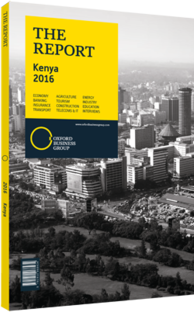Kenyan geothermal power growing and set to change the market
Geothermal energy offers a solution to Kenya’s energy constraints that is both cost-effective and has great development potential, and it is now the largest contributor to total power production in Kenya. Furthermore, it is set to expand significantly in the next 15 years. The government and private sector have both made considerable progress in rolling out new geothermal projects in recent years, most notably in the Olkaria region, and private sector interest in the development of new geothermal plants remains extremely high, with a host of planned projects.
High Potential
Holding between 7000 MW and 10,000 MW of potential geothermal energy, largely concentrated within the Rift Valley, Kenya is expected to become one of the top geothermal producers in Africa. It already stands as the eighth-largest geothermal producer globally. Steam power offers a number of benefits – it will reduce Kenya’s energy constraints; provide reliable, cost-competitive base load power; and reduce carbon emissions. With such high potential, the government has set a number of ambitious targets for geothermal development, including generating 5530 MW of geothermal generation by 2030, with a mid-term goal of producing 1887 MW by 2017, up from present levels of 579 MW.
First In Africa
Kenya was the first African country to begin developing geothermal power plants in 1956, when the government first drilled two 950-metre-deep exploratory wells.
The sector gathered pace between 1967 and 1970, when Kenya and the UN Development Programme entered into a partnership to undertake geothermal resource assessment in the country. A second key period occurred during 1971-76, when the government began drilling in the Olkaria region.
Today the Kenya Electricity Generating Company (KenGen), a 70% state-owned company, is responsible for the majority of Olkaria’s development. The Geothermal Development Company (GDC) undertakes exploration work, and after identifying fields with high commercial potential, tender out projects for development to KenGen or others.
Capacity On The Rise
Geothermal production has soared in recent years, after KenGen began commercial production at the 140-MW Olkaria IV plant, which was commissioned in August 2014, as well as the 140-MW Olkaria I Unit 4&5 plant, which started operation in January 2015.
The private sector is also actively involved in the development of Kenya’s geothermal resources, most notably at Olkaria III – a 110-MW plant developed and owned by Israel’s Ormat Industries – which opened in February 2014. Retail electricity tariffs dropped significantly after these projects were brought on-line, according to Simon Ngure, manager for regulatory affairs at KenGen.
“We ended up reducing retail tariffs by between 30% and 35% as a result of a reduction in fuel costs, as the thermal power stations are currently mostly used to serve the peak load,” Ngure told OBG.
Recent Developments
Recent geothermal developments have been extremely promising, and indicate the country is well on its way to meeting its ambitious geothermal targets. In June 2015 KenGen announced it had recorded significant steam finds in Olkaria, putting it in the ideal position for a new phase of capacity enhancement projects. According to a company press release, a total capacity of 350 MW of steam power is currently available for three planned projects in Olkaria, as the company continues to drill wells to supply steam for Olkaria I’s Unit 4&5 Plant.
In August 2015 the Kenya Power and Lighting Company announced it is set to purchase 70 MW of geothermal power from Akiira Geothermal and Marine Power Generation, from its 140-MW Rift Valley plant. Further development is also expected at the Menengai steam field in the Rift Valley, where the GDC has located an extra 400 MW of geothermal potential.
You have reached the limit of premium articles you can view for free.
Choose from the options below to purchase print or digital editions of our Reports. You can also purchase a website subscription giving you unlimited access to all of our Reports online for 12 months.
If you have already purchased this Report or have a website subscription, please login to continue.

